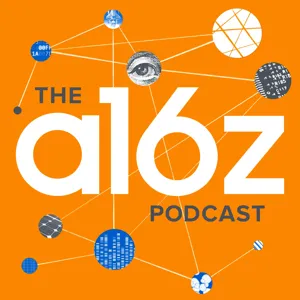Podcast Summary
Four Creators Share Their Experiences of Launching Newsletters on Substack: During the pandemic, newsletters on Substack have gained popularity. Creators from various backgrounds discuss reasons for going paid or unpaid, importance of audience, and pressure to consistently produce content.
The creator economy, specifically newsletter writing, has seen a significant surge in popularity during the pandemic. Four creators from diverse backgrounds, including a journalist, an artist, a technologist, and a clinical researcher, share their experiences of launching newsletters on Substack within the past year. They discuss the reasons behind their decision to go paid or unpaid, the importance of finding and fostering an audience, and the pressure to consistently produce content. Patrice Peck, a freelance journalist, launched "coronavirus news for black folks" to address the disproportionate impact of the pandemic on the black community. Edith Zimmerman, an artist and writer, started "Drawing Links" to share her comic-style illustrations and personal musings. Lenny Ricchitski, a software engineer, launched "Lenny's newsletter" to share his tech-focused insights. Zach Hegney, an acupuncturist and researcher, started "The Tripp Report" to explore the science, policy, and business behind medicinal psychedelics. While some, like Patrice and Lenny, initially went paid due to financial necessity, others, like Edith, chose to remain unpaid and focus on building an audience. Overall, the episode highlights the appeal of newsletters as a personal and authentic way to share content and connect with readers.
Should you charge for your newsletter?: Success depends on dedication, audience engagement, and strategic planning. Charging can be a primary source of income, or a side gig. Pandemic impacted newsletter creation differently for creators.
The decision to charge for a newsletter depends on one's goals. If it's intended to be a primary source of income, then charging is advisable. However, if it's used as a tool to learn, expand opportunities, or maintain as a side gig, then keeping it free may be the better choice. The pandemic has impacted newsletter creation in various ways, with some finding inspiration and increased readership, while others faced challenges in generating content. Many creators have left their jobs to focus on their newsletters, some viewing it as a side gig, while others aim for it to be a full-time living. The income from a newsletter on Substack can range from covering groceries to six-figure yearly earnings. Ultimately, the success of a newsletter depends on the creator's dedication, audience engagement, and strategic planning.
Balancing audience, tone, and content creation in a subscription newsletter: To create a successful subscription newsletter, cater to a diverse and knowledgeable audience, maintain an authentic and engaging tone, and experiment with content and adaptation.
Creating and maintaining a successful subscription newsletter involves balancing various aspects, including audience, tone, content creation, and production cadence. The speaker, who runs a weekly newsletter about the intersection of neuroscience, psychiatry, mental health, healthcare, clinical trials, FDA approval, and psychedelics, emphasized the importance of catering to a diverse and knowledgeable audience while maintaining an authentic and engaging tone. They also discussed the challenges of overcoming imposter syndrome and perfectionism, as well as the motivation and pressure that comes with charging for a subscription. The speaker shared their experiences with both aggregating content and creating original pieces, and highlighted the importance of experimentation and adaptation in the creative process. They also touched on the potential risks of the psychedelic emerging ecosystem and the importance of staying motivated and committed to producing high-quality content for their subscribers.
Building a dedicated community of subscribers: Transitioning to a paid newsletter model can lead to a more intimate relationship with engaged subscribers, resulting in valuable feedback and support. Grow this community through word-of-mouth and a Slack group.
Transitioning to a paid newsletter model can significantly change the dynamic of engagement with subscribers. While it may initially seem daunting to ask for financial support, the shift in mindset can lead to a more meaningful and intimate relationship with readers. This can result in a community of engaged subscribers who provide valuable feedback and support each other. Growing this community can be achieved through word-of-mouth and building a Slack group for paid subscribers. However, navigating the paid newsletter ecosystem can be challenging, with decisions around content, engagement, and monetization requiring careful consideration. Despite these challenges, the potential benefits of building a dedicated community of subscribers make it a worthwhile endeavor.
Leveraging Twitter and Newsletters for Growth: Sharing valuable content on Twitter and newsletters can attract new followers and subscribers, leading to a powerful flywheel effect.
Building a newsletter and leveraging social media, particularly Twitter, can create a powerful flywheel effect. By sharing valuable content on both platforms, creators can attract new followers and subscribers. This was the experience of Lenny Rachitsky, who grew his newsletter by writing about the business and policy of emerging industries, and sharing nuggets of his posts on Twitter. Even with a small following initially, he saw significant growth in both directions. Zach, who is new to the newsletter game, promotes his content on LinkedIn and has seen success due to the high demand for information in his specific domain. Patrice, who launched her newsletter in April, also saw unexpected growth when publications targeting black audiences covered her newsletter, leading to a snowball effect of interviews and new subscribers. The newsletter community feels interconnected, with creators benefiting from each other's recommendations and collaborations. Social media, particularly Twitter, can be an effective tool for newsletter growth and discovery, creating a network of like-minded individuals and content.
Finding Success in Niche Newsletters: Connecting, Monetizing, and Thriving: Building connections with like-minded individuals, even with different angles, leads to a more loyal and influential following. Monetizing newsletters through platforms like Patreon can support creators and provide value to subscribers, especially during industry changes and societal fragmentation.
Creating and maintaining a successful newsletter involves building connections with like-minded individuals, even if the topics aren't identical. It's about approaching a shared interest from different angles. Another key point is that going from a large following to a smaller, more loyal one can feel strange but is more impactful and influential. Monetizing a newsletter through platforms like Patreon can be a way to support oneself and help others, especially during times of industry change and societal fragmentation. In the end, niche community-targeted media is becoming a significant part of the media landscape, rather than a tangent to traditional journalism.
Newsletters: A direct platform for creators to reach readers: Newsletters enable creators to build a dedicated audience, offer unique features, and provide value through entertainment, education, information, making money, or community.
Newsletters offer creators an accessible platform to share their content directly with readers, bypassing traditional media gatekeepers. From the creator's perspective, this freedom and opportunity to build a dedicated audience is significant. Newsletters also allow for unique features, such as a personal connection through email, and the ability to combine various content formats like writing and comics. However, there are concerns about oversaturation and the potential for subscription fatigue as more newsletters emerge. To stand out, successful newsletters provide value by entertaining, educating, informing, making money, or fostering a sense of community. Ultimately, the key to a successful newsletter lies in offering unique, high-quality content that resonates with a specific audience.
Consistently delivering value in newsletters: To succeed in newsletters, consistently deliver value through unique perspectives or valuable information while maintaining authenticity and transparency.
Finding success in creating a newsletter depends on consistently delivering value, whether that's through sharing unique perspectives, offering valuable information, or a mix of both. Authenticity and transparency are key to resonating with subscribers and setting yourself apart from the competition. However, balancing authenticity with the pressure to maintain a consistent persona can be challenging. Ultimately, the most successful newsletters are those that are true to the creator's voice and provide value to the audience. Consistency and authenticity are the keys to outlasting the competition in this space.
Creating a successful newsletter takes dedication: Dedicate full focus for best results, measure success financially and emotionally, set interim benchmarks, and explore additional income streams.
Creating a successful newsletter requires a significant investment of time and energy. Those who can dedicate their full focus to it have an advantage over those who balance it with a day job. Success can be measured financially, through reaching a desired income level, and emotionally, through the value received from readers. The journey to reaching these goals may involve setting interim benchmarks and exploring additional income streams for added stability. Some favorite newsletters mentioned in the discussion include those that provide valuable insights, inspire, and offer a sense of community. Ultimately, the goal is to create a newsletter that makes a positive impact on readers' lives.
New Wave of Content Creators on Substack: Substack offers a platform for solo creators to share unique perspectives and insights on various topics, providing valuable information and personal musings. Newsletters offer a refreshing alternative to traditional news sources, creating a community of engaged and interested individuals.
There's a new wave of content creators and newsletter writers who are using Substack as a platform to share their unique perspectives and insights on various topics, from beauty and culture to technology and business. These solo creators offer a deep dive into their areas of expertise, providing readers with valuable information and personal musings. From Darienne Simone Harvin's musings on millennial women's experiences to Bill Bishop's insights on China, there's a newsletter for every interest. Other notable newsletters include Ruffian by Ian Leslie, Craig Maude's personal musings from Japan, Monica McLaughlin's antique jewelry newsletter Dearest, and Why is this Interesting?'s daily selection of different stories. These newsletters offer a refreshing alternative to traditional news sources, providing a more personal and engaging reading experience. Whether you're interested in tech trends, ecommerce, or the passion economy, there's a newsletter out there for you. The beauty of Substack is that it allows these creators to build a direct relationship with their readers, creating a community of engaged and interested individuals.




